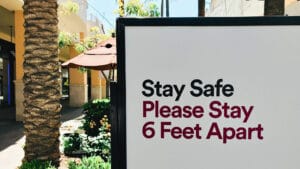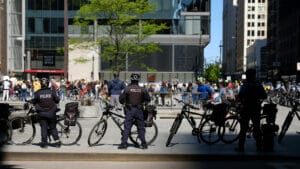Written by: James Hart
Shoplifting is one of the most persistent threats to retail businesses — and one of the toughest to solve. Fortunately, you can substantially lower your company’s risks with two basic strategies: consistent training and more effective store design.
“Shoplifting has always been a problem,” said Josh Noland, vice president at Chesley Brown International, the security consulting and management firm. “It’s more of an issue now partly because so many businesses aren’t being aggressive enough when it comes to loss prevention.”
And there are a lot of reasons why stores don’t press the issue:
- They’re too busy. They don’t have the time or money to go to court.
- Some worry that confronting shoplifters could endanger their employees and lead to lawsuits.
- Police, who might be shorthanded or busy with even more serious crimes, don’t always have the time to take every suspect to the local jail — assuming the jail even has room to hold the bad guys.
“It’s catch and release,” Noland said. “So these bad actors are thinking: Well, I’m going to go out and do the exact same thing because I can get away with it.”
But you must take it seriously because the opposition is only getting smarter and tougher. Organized shoplifting rings only need moments to steal thousands of dollars in merchandise.
It doesn’t have to be that way. Retail businesses can defend their stores, their employees and their bottom line without even laying a finger on shoplifters. Noland shared a few best practices that Chesley Brown recommends to its clients.
Invest in consistent training
Your store’s employees are on the front line in the battle against shoplifting. But they need training on how to effectively spot and respond to thieves.
Many retailers offer loss prevention training when workers are first hired. The smartest ones present training sessions to their entire teams on a regular basis, usually quarterly. Everyone can benefit from a refresher.
“There’s so much turnover in retail,” Noland said. “By the time you train somebody on your shoplifting policy, there’s a good chance they’re now at a different store. Or they’re working a different shift, or they’re completely out of the industry.”
Here are a few tactics that retail workers can use in their daily rounds.
Look for unusual dress and behavior
Keep an eye on shoppers who are wearing overly loose clothing that seems out of place — for example, winter clothing during warm weather, or who bring in large bags.
Acknowledge people when they come into the store.
Greet them and ask if they need help finding anything. Shoplifters want to attract as little attention as possible, so demonstrating that you’re watching might convince them to go somewhere else.
Chesley Brown teaches its clients to use the 20-10-5 rule. Whenever a visitor comes within 20 feet of an employee, the employee should make eye contact and smile. When they’re 10 feet away, the employee should say hello and, at 5 feet, ask if they can help the customer.
“Having engaging customer service? That’s just a good business plan anyway,” Noland said. “You’re going to have happier, more satisfied customers when they feel like they’re being tended to. But you’re also showing any bad characters that you’re paying attention. They’re going to think: Maybe this isn’t the type of store I want to do this in.”
Maintain visual contact and ask them to pay
If an employee sees someone pocket an item, they should keep a constant watch on that customer until the person either pays or starts to leave. If the person is heading for the door, the employee should say something like: “Excuse me, I noticed you picked up that item. Would you like to pay for it now?”
Most stores have a policy against physically confronting shoplifters, and for good reason. It can endanger shoppers and staff, and it can lead to legal consequences.
Politely asking gives the shoplifter one last opportunity to do the right thing, without risking violence. In shopping centers where Chesley Brown provides security staffing, its Officers can stand nearby when store employees talk to a suspected shoplifter, simply to back up the employees.
“When you engage someone and you’re pleasant and friendly, someone will be less likely to try to take advantage of you,” Noland said. “Even if it’s just subconsciously, they’re going to feel a little guiltier than if you didn’t speak to them at all.”
Optimize the store’s layout for better security
How a store is organized can make a shoplifter’s job easier or harder. It can be worthwhile to consult with a security consultant on best practices because their outside perspective will catch problems that might get overlooked.
“We love doing walk-throughs of a retail store with management and pointing out, you know, this might not be the best spot for that product,” Noland said.
For example, a small but popular item like fingernail polish shouldn’t be shelved in an out-of-the-way corner where a thief can pocket it without anyone noticing. You might not even realize there’s a problem until you check inventory and notice the shrinkage.
“You need to ask yourself where you can put those products so you can get more eyes on them,” Noland said.
The firm’s experts might recommend lowering the height of some shelves so staff can more easily watch shoppers. They will highlight other problems that could limit line of sight or present a tripping hazard, like leaving boxes of merchandise in the aisles.
Where the checkout is located can make a difference when responding to a shoplifter, too.
If the register is located toward the middle or back of the store, employees can see if someone is heading to the door without paying and then try to talk to them. Maybe that person will change their mind and pay up. Maybe they honestly forgot they had the item on them and just needed a reminder.
But when the register is right next to the exit, the shoplifter can breeze past without anyone calling them out.
One of the best security features is also one of the simplest: an attractive sign, placed near the entrance, that alerts visitors that your store prosecutes shoplifters.
One thing you shouldn’t do
Don’t install nonworking “dummy cameras.” Some businesses use these devices, thinking it will scare off shoplifters.
But if someone really intends to steal something, a camera probably won’t stop them, Noland said. Even worse, you won’t have any evidence if you want to press charges against repeat offenders.
You might be wondering just how effective any of these measures are. If retail workers can’t really detain shoplifters, and if law enforcement can’t do anything, nothing is stopping a thief from simply walking out of the store, scot-free.
But stores can change the dynamic if they catch shoplifters on video, especially if multiple stores record the same person or ring. For starters, it lets store management identify thieves and alert staff that a repeat offender is in the store.
Video evidence also increases the odds of serious jail time, not just a fine.
“Police departments love that,” Noland said. “The more documentation and evidence that you can hand over, the happier the police officer you’re going to have.”
The bottom line on shoplifting and loss prevention
Many retailers operate on razor-thin margins. Shoplifting can seriously cut into — or even erase — those businesses’ profits. Fortunately, store owners and operators have the power to push back against this threat and safeguard their operations.
Make sure all of your employees understand loss prevention policy. Offer training to new and existing employees regularly. And set up your stores so that it’s harder for retail thieves to swipe products off your shelves.
Chesley Brown has provided expert advice on loss prevention strategies to retail chains, store operators, shopping centers and other clients across North America. It’s just one of the services in the firm’s comprehensive portfolio of security solutions. Schedule a consultation today to learn how Chesley Brown could benefit your company.
Sign up!
For industry-leading guides and analysis sign up for our blog below.
Latest News
2 Painless Ways to Transition Your Retail Business to Touchless Technology
Why your business should be transitioning to touchless tech right now As a business owner in the retail industry, adjusting to the Covid-19 pandemic is a huge challenge. Nevertheless, you’ve crossed your t’s and dotted…
3 Overlooked Tips to Destress During the Holidays
Bring home holiday gifts without the baggage It’s that time of the year. Some would say the most wonderful time. But for others, the lights and tinsel of the holidays evoke strong memories of the…
Top 5 Problems Facing the Retail Industry
And the best ways to solve them We’ve all heard the Black Friday stories of fist fights breaking out in aisles of the local big-box retailer. To the average person, such stories are humorous. But…
Holiday Safety Tips
3 practical ways to stay safe in 2020 We’ve all heard humorous holiday tales. They make for great entertainment around the table during a turkey dinner. You know the stories–e.g., the time Uncle Frank fell…
Election Day: Planning for Civil Unrest
Protecting your business in the event of election day civil unrest requires planning. Here we discuss four proven strategies for Civil Unrest







